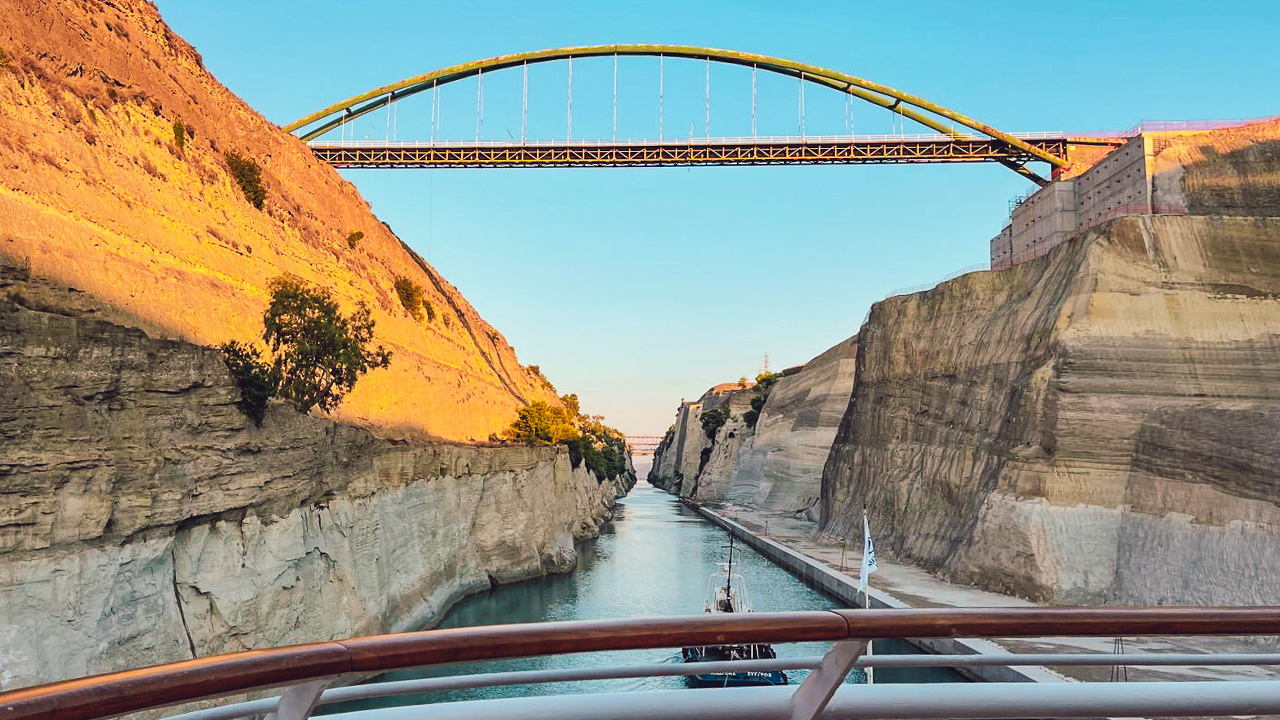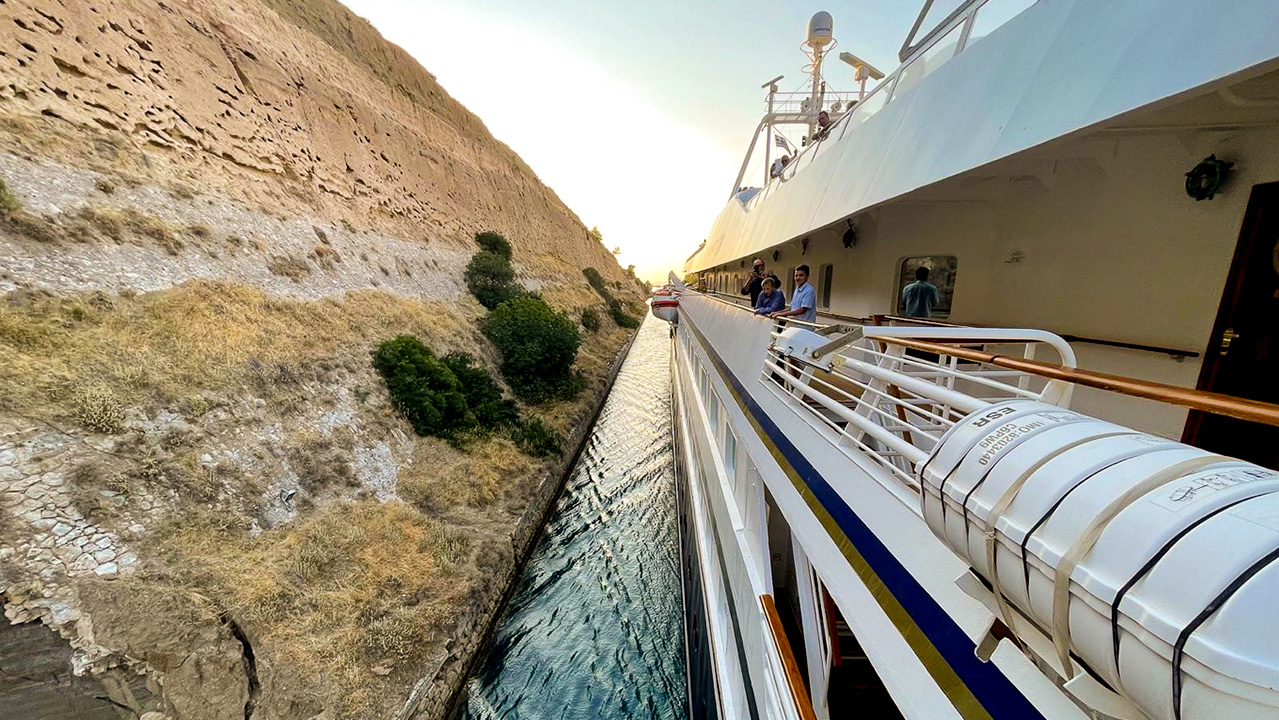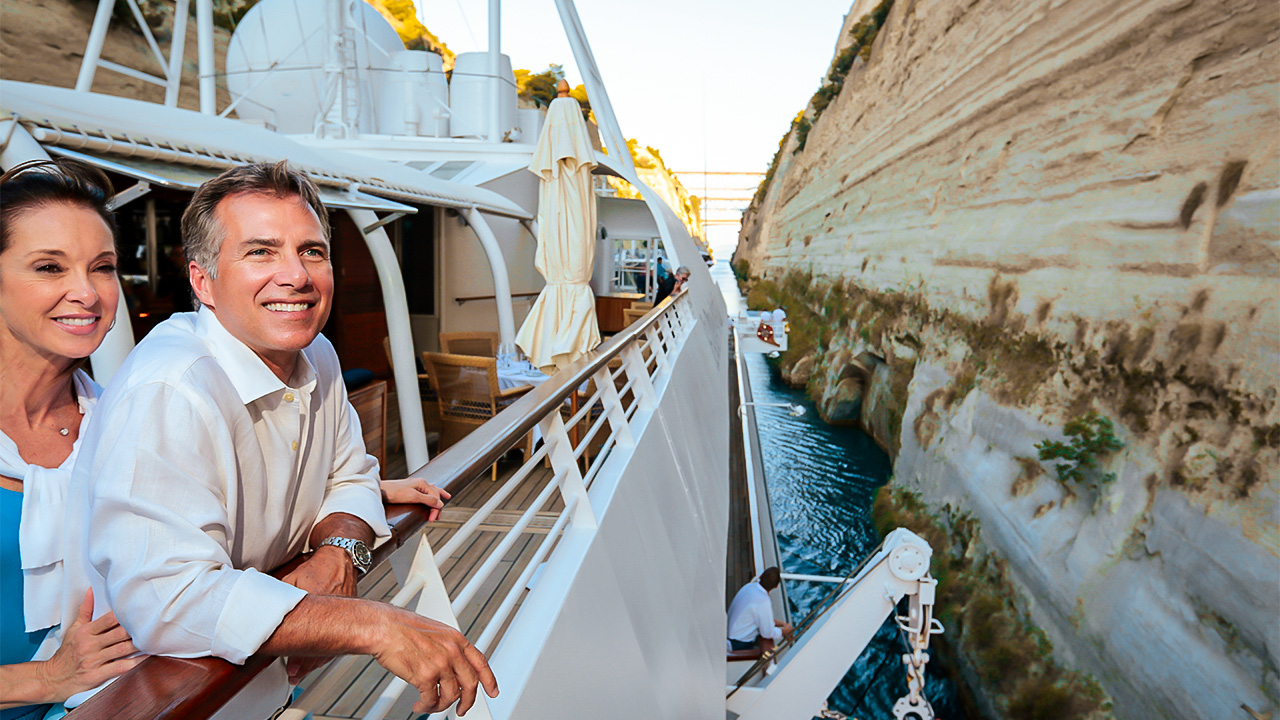There are moments at sea that feel almost otherworldly, when the water narrows, the cliffs rise, and the world seems to press pause. Sailing through the famed Corinth Canal is one of those moments. Aboard a SeaDream yacht, this passage is nothing short of extraordinary, making this experience the very definition of a luxury cruise that separates SeaDream from larger cruise lines and other high-end cruise ships.
As the canal’s limestone walls tower overhead and the sunlight shifts in golden ribbons above you, you instantly understand why only small, nimble yachts like SeaDream I and SeaDream II can make this journey. Larger ships simply cannot pass. This is yachting at its purest: rare, intimate, and unforgettable, unlike any experience offered by larger upscale cruise lines.
Corinth Canal history, origin, ancient Greece

Long before the canal existed, ancient Greeks imagined a way to link the Aegean and Ionian Seas. The challenge? Ships had to sail around the entire Peloponnese, a detour of roughly 185 nautical miles.
To solve the problem, the Greeks engineered a remarkable workaround in the 7th and 6th century BC: the Diolkos, a paved stone road stretching across the isthmus. Equipped with deep parallel ruts, it allowed ships to be hauled over land, set on wheeled platforms called olkos. Portions of this ancient road and its grooves can still be seen today.
Visionaries from Periander to Julius Caesar to Emperor Nero all proposed cutting an actual canal. Nero even lifted the first basket of soil himself in a theatrical ceremony. But for centuries, the dream remained just that.
How the Corinth Canal Was Built: Engineering the Impossible

The canal we sail today was built between 1882-1893 by Greek and French engineers using the most advanced machinery of the day. General supervision of the enormous undertaking was in the hands of Genera István Türr, aide-de-camp to the King of Italy. The project was completed by the Greek Corinth Canal Company, making this passage a dream location on Italian and Greek vacations.
The canal is 6,343 meters in length. It has a width of 24.60 meters at surface level and 21.30 meters at the seabed, and in some places its sides are a dramatic 79 meters high.
The result is a passage so narrow and dramatic that it feels almost surreal, especially when experienced from the open decks of an intimate SeaDream yacht. Road and rail bridges span its height, while submersible bridges at either end connect Central Greece with the Peloponnese. Yet despite these modern touches, the canal retains the awe of an ancient dream finally realized.
What makes SeaDream Yacht Club the best option for a Corinth Canal cruise from Athens?

The Corinth Canal’s narrow span allows passage only for small, graceful yachts, making SeaDream’s transit a privilege reserved for a select few. With a width of just over 70 feet at its narrowest point, the canal physically excludes larger vessels, creating an experience that only intimate luxury yachts can navigate. This rarity is part of its magic: the quiet glide between towering cliffs, the thrill of sailing a route unreachable to larger ships, and the breathtaking proximity to a historic engineering wonder carved through limestone. This is not simply a crossing, but a moment shaped by centuries of vision, one that lingers long after your voyage has ended. This experience is a hallmark of the world’s most luxurious cruises and upscale cruise lines.
The Most Memorable Way to See the Corinth Canal
Whether you’re standing on deck as the cliffs glow in the afternoon sun or watching the canal walls drift past your stateroom window, the transit is a moment that lingers long after your voyage ends. It’s the kind of experience that defines SeaDream Yacht Club: intimate, rare, and deeply memorable. This experience can be found on select Mediterranean cruises in Italy and Greece.
Are you ready to experience the Corinth Canal on a Luxury Yacht?
Join us on a journey that includes the iconic Corinth Canal, combined with quiet Greek islands, sunlit harbors, and the unhurried luxury of an intimate yacht. Begin exploring our 2026 and 2027 Mediterranean voyages and reserve your place on this unforgettable passage.